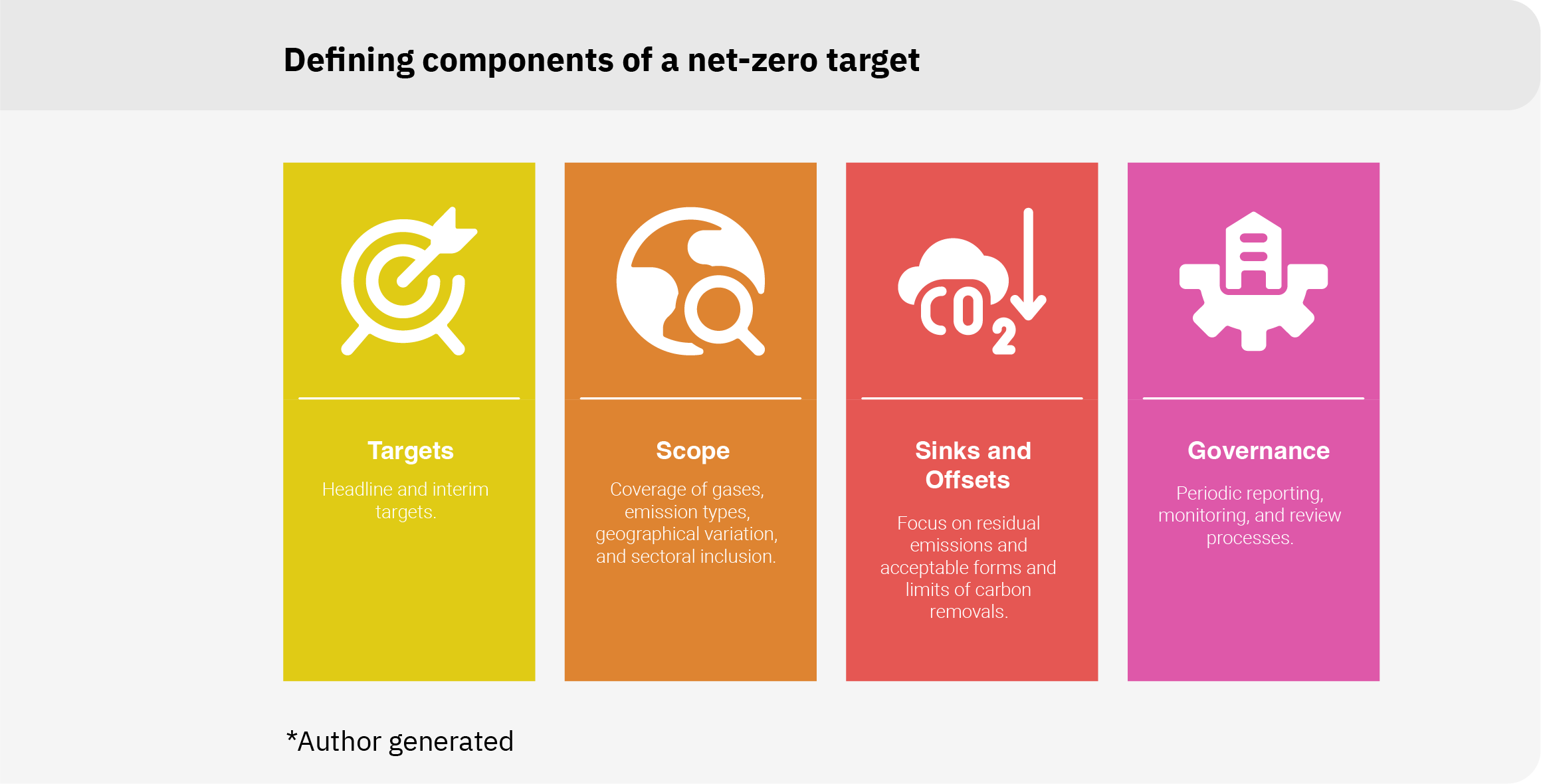Climate Policy
|21 July 2025
What Does Net-Zero Mean? Defining Goals Aligned With National Contexts

Introduction
Net-zero emissions targets have emerged as a central pillar of global climate ambition. As of June 2025 (following the US’s second withdrawal from the Paris Agreement), 142 countries have announced—or are considering—net-zero targets. Together, they account for nearly 76% of global greenhouse gas (GHG) emissions and 84% of the world’s population. However, these targets vary in scopes and timelines, reflecting differences in historical responsibility, development needs, domestic capabilities, political realities, and economic structures. Developed economies like the European Union and Japan target reaching net-zero by 2050, while China aims to reach it by 2060. India has committed to achieving net-zero emissions by 2070.
As India gradually pivots towards a net-zero pathway, it is crucial to establish a clear, shared understanding among national and sub-national governments, policymakers, regulators, industries, and civil society of what ‘net-zero’ truly means in the domestic context. Without this coherence, strategies risk being fragmented or misaligned across levels of governance and sectors of the economy.
This issue brief outlines key considerations that can help shape a comprehensive definition of net-zero emissions for India, not by prescribing implementation strategies, but by deconstructing net-zero targets by their constituent elements necessary for clarity, comparability, and accountability. The brief discusses these elements across four aspects: [1] Targets reflect “what” the entity aims to achieve and whether interim milestones are included. [2] Scope defines “what all is covered”. To put into perspective, two entities may share the same headline target but differ significantly in coverage. [3] Sinks and Offsets clarify how residual emissions will be addressed, and what forms of carbon removals are deemed acceptable, credible, and verifiable. [4] Governance encompasses institutional arrangements for reporting, monitoring, and review. Ensuring that those responsible for delivering on targets are held to account through appropriate mechanisms, incentives, and oversight structures.
Taken together, these dimensions form the building blocks of a robust net-zero definition. The brief’s objective is to support India in deciding the design of the end-goal itself, rather than outlining the path to reach it.




